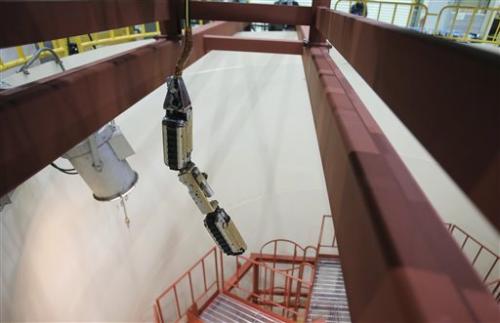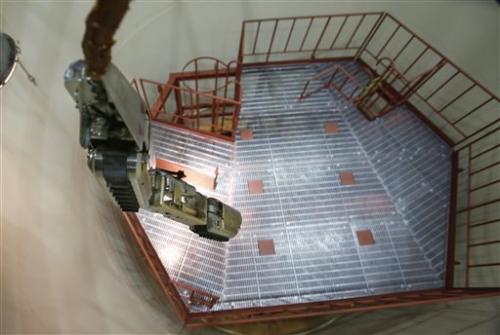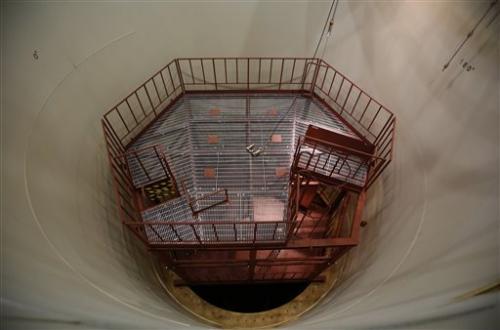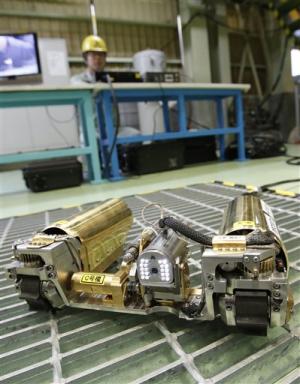A snake-like robot developed by Japanese electronics giant Hitachi and its nuclear affiliate Hitachi-GE Nuclear Energy, has passed all tests and is ready for its April-timed probing of unit 1 of the melted Fukushima nuclear reactor.

The reactor was destroyed in March 2011 by an earthquake and tsunami. Since then, a massive clean-up has been underway, but in order to officially decommission the plant, it needs to be determined the site is no longer an environmental threat.
In its current state, no humans can go close to the reactor chambers because of their fatally high radiation levels. Information can be gathered by the robot, though, and from this data the plant operator, Tokyo Electric Power Company, can make plans to repair the damaged chambers enough so they can be filled with water in preparation for the removal of melted radioactive debris.
The goal is to have this done in the next decade or so.

The robot measures about two feet long. It has a lamp at the front and is specially designed to crawl in a manner similar to that of a snake through a 4-inch wide pipe into the unit’s containment vessel. From there, it must dangle and descent on to a platform below the reactor core’s bottom.
Once there, the bot will adjust itself into a U-shaped crawler and begin capturing live images as well as temperature and radiation levels. All captured information will then be transmitted to a control station outside the building.


Given the limited success of the group’s earlier efforts, expectations are high for this particular bot.
“Depending on how much data we can collect from this area, I believe (the probe) will give us a clearer vision for future decommissioning,” Hitachi-GE engineer Yoshitomo Takahashi said.
One of the things the snake-bot will be looking for in particular is to check the status of the fuel rods. Computer simulations suggest that all of the rods probably melted and fell to the bottom of the containment chamber, but until now there has been no way of confirming this theory. A brief fiberscope observation was conducted in 2012, but all that resulted from this particular expedition were images that were grainy and scratchy.
To assess debris on the bottom and submerged underwater, an amphibious robot is being developed for deployment next year.
Due to the extreme damage the reactor suffered, large volumes of cooling water continue to leak in to this day; this has led to further contamination than in the earlier stages, and hampering the plant’s cleanup process.
Once the trip is complete, the bot will be stored in a shielded box because of its extremely high radioactivity; for this reason, it will also not be reused.
Worth noting — even if this particular bot is successful, the group won’t be reproducing it. Each reactor is designed differently, and so in order to gain access, a bot must be custom-designed in order to gain entry efficiently.
Via Phys.org
Advertisement
Learn more about Electronic Products Magazine





